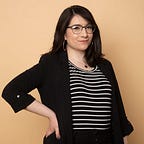The Millennial Jews Taking on ICE
The concept of ‘tikkun olam’ — repairing the world — weighs heavy on their minds. So does Jewish history.
 Ralph Preiss was a child living in Rosenberg, Germany, on November 9, 1938, when mobs began burning down synagogues, breaking into Jewish-owned businesses, and beating people in the streets. At least 96 people died during Kristallnacht, and nearly 30,000 Jewish men were rounded up and sent to concentration camps. Preiss’ family witnessed the rise of the Nazi party’s Nuremberg Laws targeting their community. Jews and gentiles were not allowed to marry; Jewish children were banned from public schools; civil servants were dismissed from their posts. Shortly after Kristallnacht, Preiss’ family left Germany, traveling first to France, and then to the Philippines. Most of their extended family stayed behind in Europe and died in the Holocaust. Preiss fled to the United States in 1948 at the age of 18; he built a life in America, but the shadow of terror haunted him.
Ralph Preiss was a child living in Rosenberg, Germany, on November 9, 1938, when mobs began burning down synagogues, breaking into Jewish-owned businesses, and beating people in the streets. At least 96 people died during Kristallnacht, and nearly 30,000 Jewish men were rounded up and sent to concentration camps. Preiss’ family witnessed the rise of the Nazi party’s Nuremberg Laws targeting their community. Jews and gentiles were not allowed to marry; Jewish children were banned from public schools; civil servants were dismissed from their posts. Shortly after Kristallnacht, Preiss’ family left Germany, traveling first to France, and then to the Philippines. Most of their extended family stayed behind in Europe and died in the Holocaust. Preiss fled to the United States in 1948 at the age of 18; he built a life in America, but the shadow of terror haunted him.
“When my grandfather shared stories from his past, the thing that disturbed me the most was how his neighbors could watch this escalating state-sponsored violence and chose to do nothing,” said Aaron Regunberg, a 29-year-old former Rhode Island state representative. “We don’t want to be like those bystanders.”
